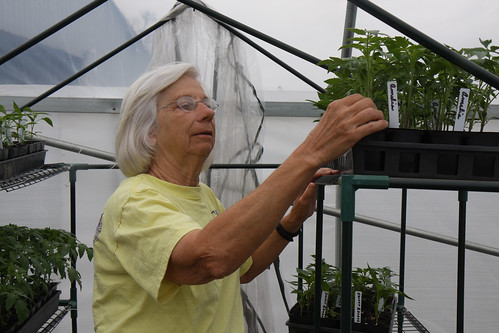
Known to her neighbors in Clarke County, Miss. as the blueberry lady, Barbara Robinson has a vibrant 20-acre farm packed with blueberries, muscadines and other produce. Robinson is one of the nation’s many fruit growers, and a recent USDA report shows the land dedicated to growing cultivated fruits, nuts and flowers is rapidly growing.
The National Resources Inventory released recently by USDA’s Natural Resources Conservation Service shows a boom in land dedicated to growing fruits, nuts and flowers, increasing from 124,800 acres in 2007 to 273,800 in 2010. Cultivated refers to farms that plant a second crop amid the fruit, nut and flower crop. This finding is one of many in the newest NRI report.
While the report only provides the numbers and doesn’t make inferences, experts at NRCS say one reason for the growth is more available assistance to fruit, nut and flower growers.
The 2008 Farm Bill provided more emphasis on specialty crop producers than in prior Farm Bills. States also developed outreach efforts through the Environmental Quality Incentives Program to target specialty crop producers.
The agency launched the Organic Initiative and Seasonal High Tunnel Initiative in 2009 and 2010, both nationwide initiatives that are aimed at specialty crop farmers, including growers of fruits, nuts and flowers. These initiatives provide incentive payments for farmers and ranchers who want to transition to or enhance organic operations or install a high tunnel.
Robinson is a veteran grower, and she recently worked with NRCS to add a high tunnel to her eastern Mississippi farm, called B&W Orchards. This high tunnel enables her to lengthen her growing season for a variety of produce, including watermelons, okra, tomatoes, carrots, broccoli, radishes and spinach.
“The high tunnel makes a difference on when you can produce food, both earlier and later,” Robinson said. “We’re seeing more and more of them in Mississippi.”
Thousands have been built with NRCS’ help since the start of the program.
As part of the StrikeForce for Rural Growth and Opportunity initiative, USDA is providing technical and financial assistance to farmers and ranchers to implement conservation practices, like building seasonal high tunnels.
The national initiative addresses high-priority funding and technical assistance needs in rural communities in 20 states, including Mississippi, with a special emphasis on historically underserved populations.
Robinson’s land was originally planted with peanuts and cotton, but in 1985, Robinson began planting the farm’s first blueberries. Now, more than five acres are dedicated to blueberries and muscadines.
Robinson also credits a renewed interest by consumers in local produce for the rise in fruit, nut and flower farms. “I’ve heard more people talk about local foods than I’ve heard in the past,” she said.
Learn more about USDA’s work in local and regional foods through the Know Your Farmer, Know Your Food Compass.

